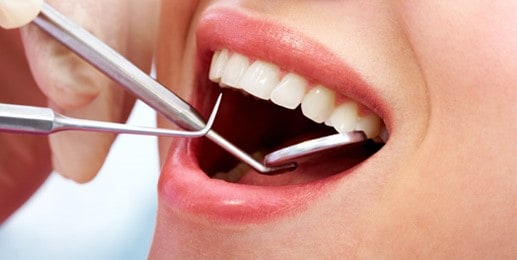Tooth Extraction Home: Painless Removal Steps

The concept of tooth extraction may seem daunting, but with the right approach, it can be a relatively painless and straightforward process. Whether due to decay, damage, or overcrowding, tooth extraction is sometimes necessary to maintain oral health. In this comprehensive guide, we will walk you through the steps involved in tooth extraction, emphasizing the importance of a painless removal process.
Understanding the Need for Tooth Extraction
Before delving into the extraction process, it’s crucial to understand why tooth extraction might be necessary. Teeth are extracted for a variety of reasons, including:
- Severe Decay or Damage: When a tooth is too decayed or damaged to be repaired with a filling or crown, extraction may be the only option.
- Overcrowding: In cases where the jaw is too small for all the teeth to fit properly, tooth extraction may be required to make room for orthodontic treatment.
- Infection: If an infection has reached the pulp of the tooth and cannot be treated with a root canal, extraction may be necessary to prevent the spread of infection.
- Gum Disease: Advanced gum disease can cause teeth to become loose, requiring extraction.
Preparing for Tooth Extraction
Preparation is key to ensuring that the tooth extraction process is as smooth and painless as possible. Here are some steps you can take:
- Consult Your Dentist: Discuss your options and the reasons for the extraction with your dentist. They will examine your teeth and possibly take X-rays to assess the tooth’s position and surrounding bone.
- Medical History: Inform your dentist about your medical history, including any medications you’re taking, as some may affect the extraction process or healing.
- Anesthesia and Sedation: Depending on the complexity of the extraction and your anxiety level, your dentist may discuss options for anesthesia and sedation to ensure your comfort during the procedure.
The Tooth Extraction Procedure
The extraction process itself can vary depending on whether it’s a simple extraction (where the tooth is visible and easily accessible) or a surgical extraction (which involves removing teeth that are not easily accessible, such as impacted wisdom teeth). Here’s an overview:
Simple Extraction:
- Your dentist will administer local anesthesia to numb the area around the tooth to be extracted.
- Once the area is numb, the dentist will use an elevator to gently loosen the tooth and then remove it with dental forceps.
Surgical Extraction:
- This procedure may require more than local anesthesia; your dentist or oral surgeon might use sedation or general anesthesia, especially if multiple teeth are being removed or if the extraction is complex.
- An incision in the gum is made to access the tooth. Depending on the tooth’s condition, it might be removed in sections.
- After the tooth is removed, the incision may be closed with stitches.
Recovery and Healing
The recovery process is crucial for healing and minimizing complications. Here are some guidelines:
- Bleeding: Some bleeding is normal after an extraction. Your dentist will provide you with gauze to bite on to help stop the bleeding. If bleeding persists, contact your dentist.
- Pain Management: Your dentist may prescribe pain medication to manage any discomfort. Over-the-counter pain relievers can also be effective.
- Swelling and Bruising: Applying an ice pack to the area can help reduce swelling.
- Diet: Stick to soft foods for a few days after the extraction. Avoid hot, spicy, or sharp foods that could irritate the extraction site.
- Hygiene: Continue your regular oral hygiene routine but avoid the extraction site until it heals.
Complications and Follow-Up
While rare, complications can occur after a tooth extraction. These can include dry socket (when the blood clot that forms over the extraction site is dislodged or dissolves before the wound heals), infection, or damage to surrounding teeth or tissue.
- Dry Socket Prevention: Avoid smoking, sucking through a straw, or spitting forcefully, as these can dislodge the blood clot.
- Follow-Up Appointment: Schedule a follow-up appointment with your dentist to ensure the extraction site is healing properly and to remove any sutures if necessary.
Conclusion
Tooth extraction, while it might seem intimidating, is a common dental procedure that can be performed with minimal discomfort when done correctly and with proper care. Understanding the reasons for extraction, the process itself, and how to care for the extraction site afterward are all crucial for a successful and painless removal experience. Always consult with a professional dentist or oral surgeon to guide you through this process, ensuring your oral health and well-being are prioritized.
How long does it take to recover from a tooth extraction?
+Recovery time can vary depending on the individual and the complexity of the extraction. Generally, most people can return to their normal activities within 24-48 hours after the procedure. However, it may take a few days for the gums to heal completely.
What are the signs of a complication after tooth extraction?
+Signs of complications can include excessive bleeding that does not stop with pressure, severe pain that is not managed with prescribed pain medication, swelling that worsens over time, or a fever. If you experience any of these symptoms, contact your dentist immediately.
Can I drive myself home after a tooth extraction?
+If you’ve received sedation or general anesthesia, it’s advisable not to drive yourself home as these can impair your ability to drive safely. Arrange for someone to drive you home and stay with you for a few hours to ensure your safety.